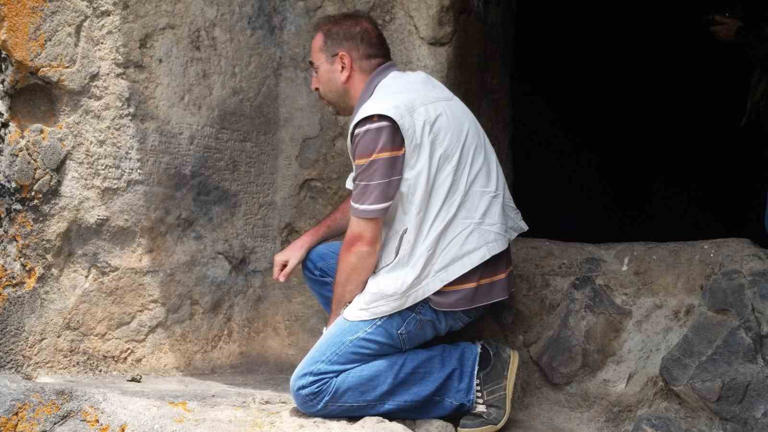
Two open-air temple thought to belong to the Urartians discovered in Tunceli
Archaeologists have discovered two separate open-air temple, one in the easternmost and the other in the westernmost part of Tunceli province.
The discovery was made by Assoc. Prof. Dr. Serkan Erdoğan, Head of the Department of Protohistory and Prehistoric Archaeology, Department of Archaeology, Faculty of Arts and Sciences, Faculty of Arts and Sciences, Yozgat Bozok University, and Dr. Düzgün Çakırca, Faculty of Architecture, Bolu Abant İzzet Baysal University, during the survey conducted in Tunceli in 2021.
Düzgün Çakırca and Serkan Erdoğan examined the temples located in two fortresses.
The results of the investigation were published in the Journal of Pamukkale University Institute of Social Sciences.
📣 Our WhatsApp channel is now LIVE! Stay up-to-date with the latest news and updates, just click here to follow us on WhatsApp and never miss a thing!!

The temples inside the two fortresses, one of which is located in the easternmost part of Tunceli provincial borders and the other almost in the westernmost part of these borders, are considered as a new type of temple that is unknown to date.
“Two fortress settlements, one in the Hozat-Çemişgezek-Ovacık triangle, Masumu-Pak castle, and the other in Lower Harik (Doluca) on the banks of the Peri Stream east of Nazımiye, are home to a new type of temple that we did not know until now,” said Assoc. Prof. Serkan Erdoğan, one of the authors of the study.

The temples in question, which must have been built before the 7th century BC (9th-8th century BC) when Urartu dominated the region, appear as rock-carved altars with grooves.
The sanctity of the temple site continues
Erdoğan said, “The question of whether these temples, which clearly have local characteristics, were built for the worship of local gods/cults or for the worship of the great gods of an era continues to puzzle our minds. The Lower Harik castle and temple located in today’s castle hamlet settlement is also known as a sacred place called ‘Moro Sur (Red Snake) and it still maintains its sanctity with the call of those who want to find healing “Ya Moro Sur, Tu esta) (You exist Moro Sur)‘.”

Emphasizing that the snake motif is an affirmed motif in geography, Assoc. Prof. Dr. Erdoğan stated that the Moresur myth has an original and authentic structure and that the history of this area as a sacred space dates back to ancient times.
You may also like
- A 1700-year-old statue of Pan unearthed during the excavations at Polyeuktos in İstanbul
- The granary was found in the ancient city of Sebaste, founded by the first Roman emperor Augustus
- Donalar Kale Kapı Rock Tomb or Donalar Rock Tomb
- Theater emerges as works continue in ancient city of Perinthos
- Urartian King Argishti’s bronze shield revealed the name of an unknown country
- The religious center of Lycia, the ancient city of Letoon
- Who were the Luwians?
- A new study brings a fresh perspective on the Anatolian origin of the Indo-European languages
- Perhaps the oldest thermal treatment center in the world, which has been in continuous use for 2000 years -Basilica Therma Roman Bath or King’s Daughter-
- The largest synagogue of the ancient world, located in the ancient city of Sardis, is being restored











Leave a Reply